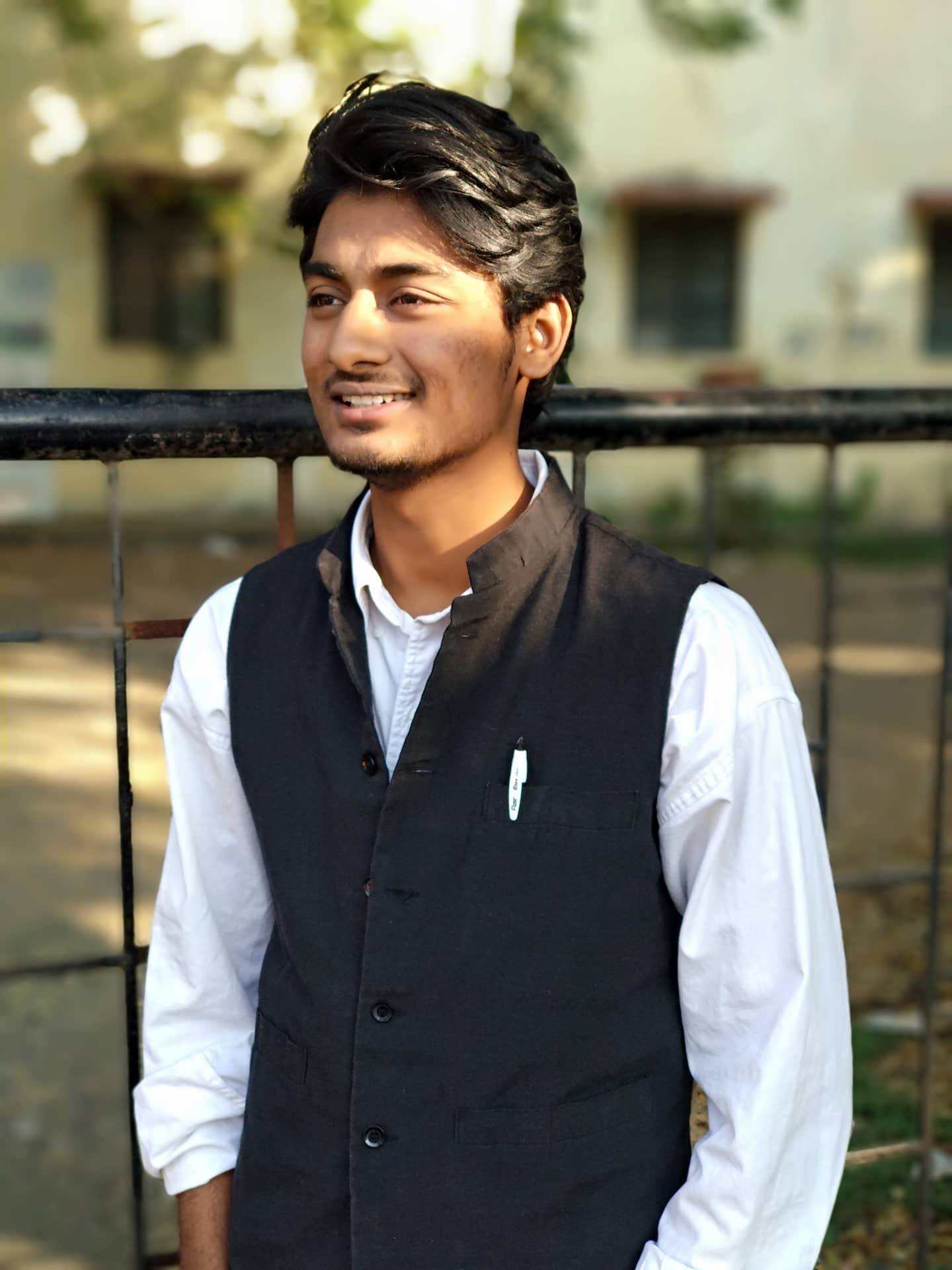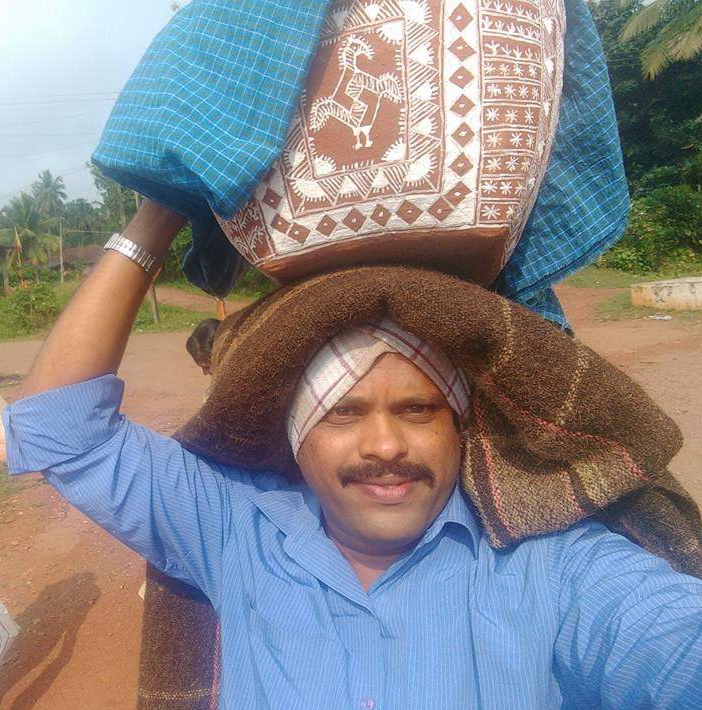Utkarsh Manav
 If a person from an ex-untouchable community becomes a well known personality in any field or makes his presence felt in any sector, these days he gets a prefix attached to his profession and that prefix is ‘Dalit’1. The insertion of this prefix seems to imply this community was not meant to be in that position and now that they have earned the name, they are known by their ex-untouchable identity. An IAS officer from this community is known as a ‘Dalit IAS Officer’, a filmmaker from this community is known as a ‘Dalit Filmmaker’ and an author or even an academician is known as a ‘Dalit Author’ and a ‘Dalit Academician’ respectively.
If a person from an ex-untouchable community becomes a well known personality in any field or makes his presence felt in any sector, these days he gets a prefix attached to his profession and that prefix is ‘Dalit’1. The insertion of this prefix seems to imply this community was not meant to be in that position and now that they have earned the name, they are known by their ex-untouchable identity. An IAS officer from this community is known as a ‘Dalit IAS Officer’, a filmmaker from this community is known as a ‘Dalit Filmmaker’ and an author or even an academician is known as a ‘Dalit Author’ and a ‘Dalit Academician’ respectively.
This has given rise to a strong polarized debate in the Dalit community. One side strongly expressing pride in calling oneself a Dalit, pride in the history of resistance against oppression, pride in reaching high positions despite facing oppression and challenges, pride in traditional occupations and traditional culture etc. This side raises some questions like ‘if one has come from that community why she should one feel ashamed of it? Why should she not take pride in its roots?’ etc. The other side of the debate strongly asserts the exact opposite aspects of the said debate. It asks some basic questions like ‘when your identity (including your names, occupation, tradition and culture etc) itself is constructed by this caste system, why should we take pride in it? Why should we not break away from this caste-based structure? Why should we not challenge the identity that is given to us by this casteist structure?’. The present article does not intend to engage in the said debate.
The said debate arises today because the ex-untouchables have compelled this caste society to pay heed to them and are persistently challenging the caste system with their ‘merit’. This ‘merit’ of ex-untouchables is incomparable with the ‘merit’ of the Savarnas because of the social location where they come from. The Dalit community, to reach any position (or even to survive in certain contexts), has to challenge the social and economic obstructions. This article deals with one such personality who has broken such restrictions and obstructions and has not only earned a name in his field but has also set up a mark which will challenge generations of Savarnas to come. The said personality is known for Sairat, Fandry, Pistulya, National Awards, Zingaat and beyond that, for his Ambedkarite thoughts. He is none other than Nagraj Popatrao Manjule.
Born in Jeur, a village in the taluka of Karmala in Solapur district of Maharashtra, Manjule comes from the Wadar community which is recognized as a de-notified tribe. Being one of the most discriminated and excluded castes, Wadar community has been traditionally limited to occupations like catching pigs, crushing stones, or as laborers in road and dam construction. The community being historically nomadic, has no or meager land holdings, its sustenance is dependent on the Savarnas in the villages. Manjule has talked about how he was made aware of his limits since childhood.
 Manjule in front of the ruins of his Zilla Parishad School at Karmala where he studied
Manjule in front of the ruins of his Zilla Parishad School at Karmala where he studied
Under conditions hardly favorable to survive he did his MA in Marathi literature from Pune University and then Masters in Mass Communication from New Arts, Science College in Ahmednagar district of Maharashtra. The collection of his poems in Marathi, which he started writing from his early years, was published as a book, ‘Unhachya Katavirudhha’. It is a reflection of his lived experiences which he has artistically crafted in words. It won multiple awards. He had a great fascination for films and Bollywood cinema from his childhood but he would have barely thought that he will end up making some of the masterpieces in Indian cinema. He grew up as a die-hard fan of Amitabh Bachchan and could hardly ever have imagined that one day he will direct this star in his own film. He is one of the most sought after directors in Indian cinema today, an industry which is greatly dominated by the Baman-Baniya nexus. His journey is a tale of struggle and the credit for his excellence should go to his Ambedkarite thoughts.
 While pursuing his Masters in Mass Communication he made his first short film ‘Pistulya’. He had barely any capital or any support at his disposal from his institute. He hardly had any skilled faculty or any high-tech equipment or even a recording studio; all that he had was his ideas, his story, his lived experience, his creativity and his undaunted will to assert. ‘Pistulya’ is the story of a boy from a ‘lower caste’ who can go to whichever extent to pursue education. The team worked with limited expertise and with amateur actors. The last scene of this movie was shot on a running Luna motorcycle. But despite all limitations they were able to produce an eye-opening film. Nagraj dedicated this movie to Mahatma Phule. He got for this first ever film of his, a National Award under the category of ‘Best First Non-Feature Film of a Director’ and Suraj Pawar received a ‘Special Mention’ as a child actor in National Awards.
While pursuing his Masters in Mass Communication he made his first short film ‘Pistulya’. He had barely any capital or any support at his disposal from his institute. He hardly had any skilled faculty or any high-tech equipment or even a recording studio; all that he had was his ideas, his story, his lived experience, his creativity and his undaunted will to assert. ‘Pistulya’ is the story of a boy from a ‘lower caste’ who can go to whichever extent to pursue education. The team worked with limited expertise and with amateur actors. The last scene of this movie was shot on a running Luna motorcycle. But despite all limitations they were able to produce an eye-opening film. Nagraj dedicated this movie to Mahatma Phule. He got for this first ever film of his, a National Award under the category of ‘Best First Non-Feature Film of a Director’ and Suraj Pawar received a ‘Special Mention’ as a child actor in National Awards.
The impact of ‘Pistulya’ was such that his second project ‘Fandry’ got support from big groups like ZEE Talkies and Essel Vision. ‘Fandry’ as per Nagaraj is his story as well as of many people he has seen, which he very brilliantly sketched on the big canvas through Jabya, the protagonist. From the images of Babasaheb and Gautam Buddha on the front door of Jabya’s friend Pirya’s house, photo of Annabhau Sathe in Chankya’s bicycle garage to Jabya and his family carrying a tied pig on their shoulders in front of a school, walls of which has pictures of Savitrimai Phule, Shahu Maharaj, Babasaheb and Sant Gadge Maharaj, every frame has a lot to say. In the last scene, the stone angrily thrown by Jabya on upper caste men not only portrays a stern assertion but also poses a challenge to the upper caste filmmakers who often show Dalit charectors as helpless victims. This stone thrown by Jabya in ‘Fandry’ is very different and incomparable to the stone thrown at the upper caste house in Shabana Azmi’s ‘Ankur’. ‘Fandry’ was critically acclaimed at both National and International platforms. At National Awards Manjule won the ‘Best Debut Film of a Director’ award and Somnath Avghade (Jabya) won the ‘Best Child Artist’ award.
His second feature film project ‘Sairat’, co-produced by Zee Studios and his own Aatpat productions, broke all the records of commercial cinema ever made in Marathi film industry. But the commercial success is not what Sairat is about. With this movie he attracted not only the intellectual audience but also the mass audience to the theaters and put before them the brutal caste reality of this casteist nation. He was criticized by upper castes (out of jealousy) that such movies will have a bad impact on the younger generation for the love story it had shown of two college-going students. It is probably only in this nation that ‘Hate is natural and Love is unnatural’; caste mentality has a lot to do with this. Just like his other projects, this film was also critically acclaimed and loved by people alike at both National and International platforms. Rinku Rajguru (Archie) received a ‘Special Mention’ at the 63rd National Film Awards.
His other projects which he either directed, produced, acted, or scripted like the short film ‘Pavasach Nibhandha’ or feature film ‘Naal’ received numerous awards. Manjule again received a National Award for ‘Best Director in Non-Feature Film’ for ‘Pavasach Nibhandha’, while Avinash Sonawane, the sound designer for the same film, received a National Award in ‘Best Audiograghy in Non Feature Film’ category. The acclamations he and his team received are plentiful. His films are a reflection of the reality that he had lived and this might be the reason that perspectives in his films come from experiences that are rooted. His story-telling and film-making skill led ‘Sairat’ to be remade in several Indian languages. His upcoming Hindi project co-produced by his Aatpaat productions, ‘Tandav’, and Bhushan Kumar’s T-series ‘Jhund’ stars Amitabh Bachchan and will definitely have something for Indian Cinema to learn from.
The lead artists in Manjule’s movies mostly have been from the Dalit or other marginalized communities. In film making Dalits were usually employed as behind-the-curtain workers and laborers or at most as villains, dancers or in side roles. Manjule is one who found talent from the excluded communities and the results are such that Somnath Avghade (Fandry), Rinku Rajguru (Sairat) and Suraj Pawar (Pistulya) received National Awards. He also made the world witness the ‘merit’ that he brought out from Akash Thosar, Tanaji Galgunde, Arbaz Shaikh, Anuja Mule (all from Sairat) and Shrinivas Pokale (Naal) and many more. These brilliant actors had no formal training and might not even have heard about National School of Drama (NSD) or FTII. This raises a fundamental question: What really is ‘merit’? Is it something that ‘reservation category’ people cannot have? Or is it that every Dalit, Adivasi or Bahujan will have to achieve something extraordinary to prove that they also have ‘merit’? Or is it just a hoax created by caste society to reject even the meager representation for these communities and humiliate them in every walk of life?
Manjule comes from such an epistemological position that his storytelling in films open up a new devastating reality for people who are unaware (read ignorant) of the brutality of the caste society. He penned down, till now four films, namely: Pistulya, Fandry, Sairat and Pavasacha Nibandha. One fact can be observed in all, i.e. a strong urge of the protagonist (a Dalit) to pursue education. In Pistulya, the boy steals a uniform so that he can also join the school; in Fandry, the boy keeps studying at night even after he is scolded by his father to not waste oil in the burning lamp; in Sairat, the male character does well in studies and the class is stunned after knowing that he has good grades; in Pavsacha Nibandha, the kid is punished because he could not write an essay on rain but he had lived the experience which no other kid in his class could ever have imagined. He writes the title of the essay but could not complete it because for him, life is no less than a punishment. It won’t be an exaggeration to claim Manjule as an iconoclast of Indian Cinema.
Next, he will be hosting a reality show ‘Kon Honar Crorepati’ on Sony television, a Marathi version of ‘Kon Banega Crorepati’. This show always has been hosted by Brahmins (Joshi, Khedekar) in Marathi version or by Upper Castes like Amitabh in the Hindi version. Now that Manjule is made to host the show which is produced by an upper caste media house and which was till date hosted by upper caste anchors, it is nothing less than an achievement and also an assertion. They now have to turn to a ‘Dalit’ for his ‘merit’ which they claimed till yesterday that only they exclusively have.
 Nagraj Manjule with Amitabh Bachhan on the set of his upcoming ‘Jhund’
Nagraj Manjule with Amitabh Bachhan on the set of his upcoming ‘Jhund’
The Savarnas of this nation should be held accountable for misuse of the word ‘merit’. Social location was never taken into account while blatantly calling a chunk of population ‘meritless’ for generations. Now this distorted notion of ‘merit’ guides the entrance tests, education sector and overall pedagogy in the country and also guides the verdicts of the courts and has become a way of life which ultimately ends up segregating and humiliating Dalits and Adivasis.
The Brahminised Upper Caste nexus is always ready to co-opt the ‘merit’ of Dalits and capitalize on their pains. Hoping that Nagraj Manjule continues to expose their falsity and break their bastions, we wish him all the best for his future projects.
Jai Bhim!!
~
Notes
1) The term Dalit appeared in the literatures of Mahatma Phule and then in the Dr. Ambedkar’s editorial journal Bahishkrit Bharat (ostracized India). The term, later in the 1970s became commonly and assertively used after the Dalit Panther Movement. The dynamic nature of the notion attached to the term ‘Dalit’ has been taken into consideration. But it has been used interchangeably to denote the henceforth untouchables in the Hindu social order. This is for the fact that caste society has always done a job of segregating ‘Dalits’ from ‘Indians’.
Images courtesy: Internet.
~~~
Utkarsh Manav is from Wardha, Maharashtra, and is currently pursuing his Masters in Dalit and Tribal Studies from TISS, Mumbai.










